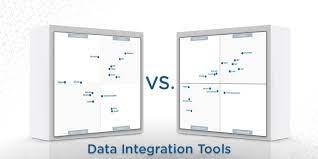What Is Meant by Data Integration Magic Quadrant?

The data integration Magic Quadrant is a graphical representation of the data integration market. It is used by analysts to evaluate data integration vendors and products.
What is the purpose of data integration?
Integration is the process of combining data from different sources into a cohesive, unified whole. When done correctly, data integration can provide a more complete and accurate view of your business, improving decision-making and operations.
Data integration is a critical process for companies that rely on accurate and timely data to make informed decisions. By integrating data from disparate sources, businesses can get a better understanding of their customers, products, and operations. This can help them make more informed decisions, optimize their operations, and improve their bottom line.
The purpose of data integration is to provide a single view of the data that is accurate and up-to-date. This can help businesses make better decisions, improve their operations, and grow their business. By integrating data from different sources, businesses can get a more complete and accurate view of their customers, products, and operations. This can help them make more informed decisions, optimize their operations, and improve their bottom line.
What is the Magic Quadrant?
The Gartner Magic Quadrant is divided into four quadrants: Leaders, Challengers, Niche Players, and Visionaries.
The Niche Players quadrant is where the providers are good at a specific thing and are not as good at other things. These providers are not as good as the Leaders or the Challengers, but they are still good options.The Visionaries quadrant is where the most innovative providers are located. These providers are often the most innovative, but they may not have as good of customer service or be as popular.
Leaders are at the top of the quadrant and are considered the best data integration vendors. They have a strong product offering and are well-known for their customer satisfaction. They are often the very innovative and have the best customer services. In short, the Leaders quadrant is where the best providers are located.
Challengers are in the second-highest quadrant. They have a good product offering but are not as well-known as Leaders. They may be less innovative or have a lower quality of customer service in comparison. These, too, are good providers.
Niche Players are at the bottom of the quadrant. They have a limited product offering and are not as well-known as Leaders or Challengers. These providers are good at a specific thing, even if they are not as good at other things. While they may not be as highly rated as Leaders or Challengers, Niche Players are still good options when looking for products within their niche.
Visionaries are in the fourth and lowest quadrant. They have a limited product offering and are not as well-known as Leaders, Challengers, or Niche Players. Their customer service may be less exceptional or their brand less popular than those in other quadrants. However, these providers are considered to be the most innovative.
What is the Magic Quadrant methodology?
The methodology is based on the concept of a “quadrant” in which providers are plotted according to their ability to deliver two axes of functionality: “completeness of vision” and “ability to execute.” In the “completeness of vision” axis, providers are plotted according to their ability to understand and articulate a long-term vision for their market. In the “ability to execute” axis, providers are plotted according to their ability to deliver on that vision.
The Magic Quadrant Methodology has been applied to a wide range of markets, including enterprise software, cloud computing, and big data.
How can the Magic Quadrant help you evaluate data integration tools?
The Magic Quadrant is a good place to start when it comes to evaluating the leading data integration tools. The report compares the features of the leading data integration tools and helps organizations select the tool that is best suited for their needs. Gartner’s Magic Quadrant is a valuable resource for organizations that are looking for a data integration tool. The report compares the features of the leading data integration tools and helps organizations select the tool that is best suited for their needs.



